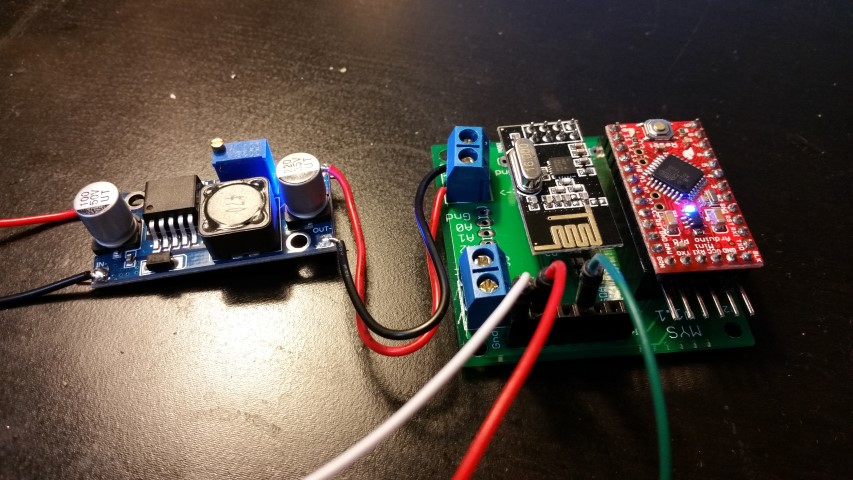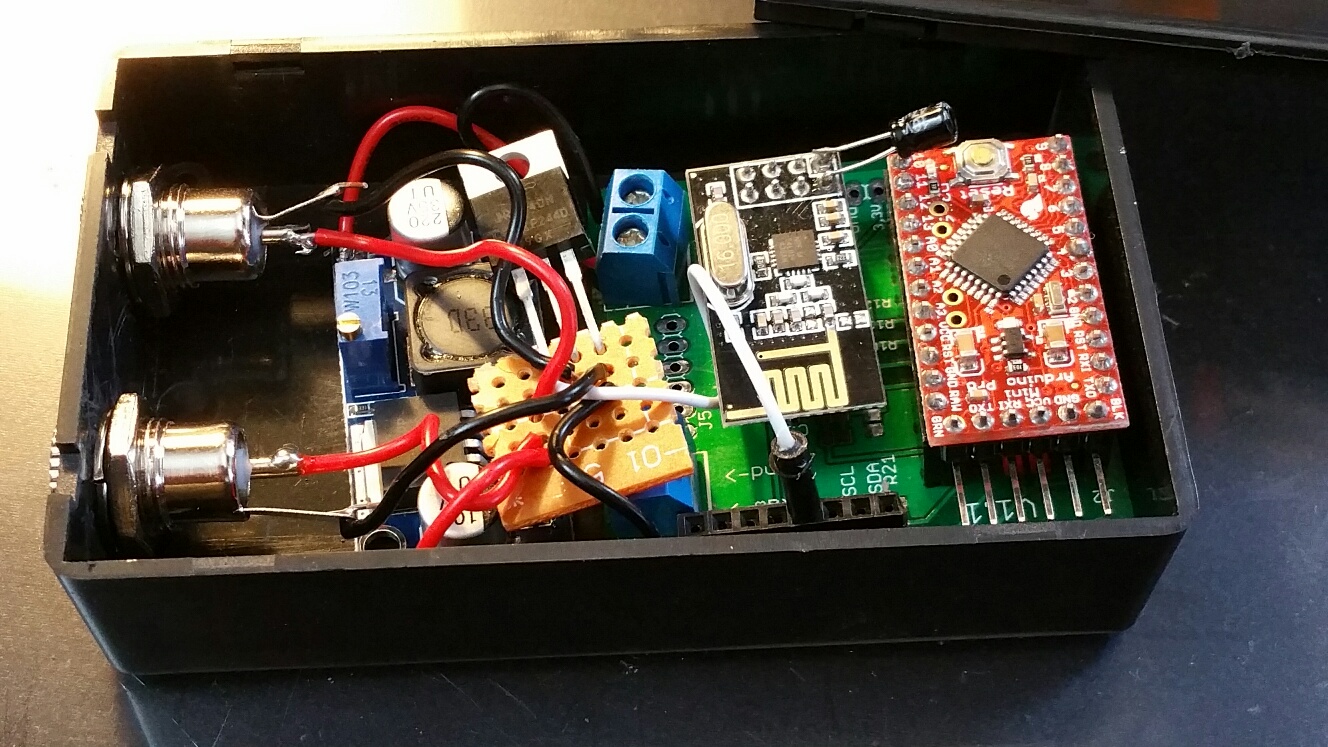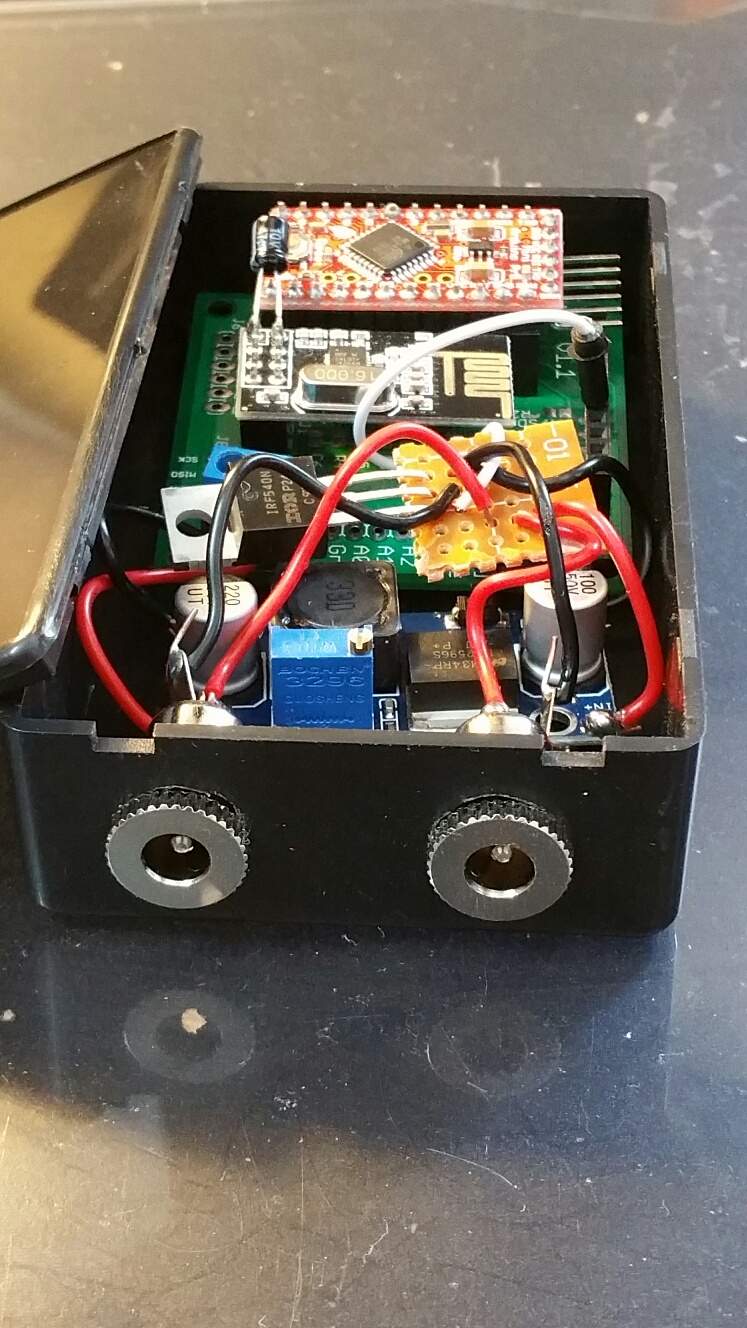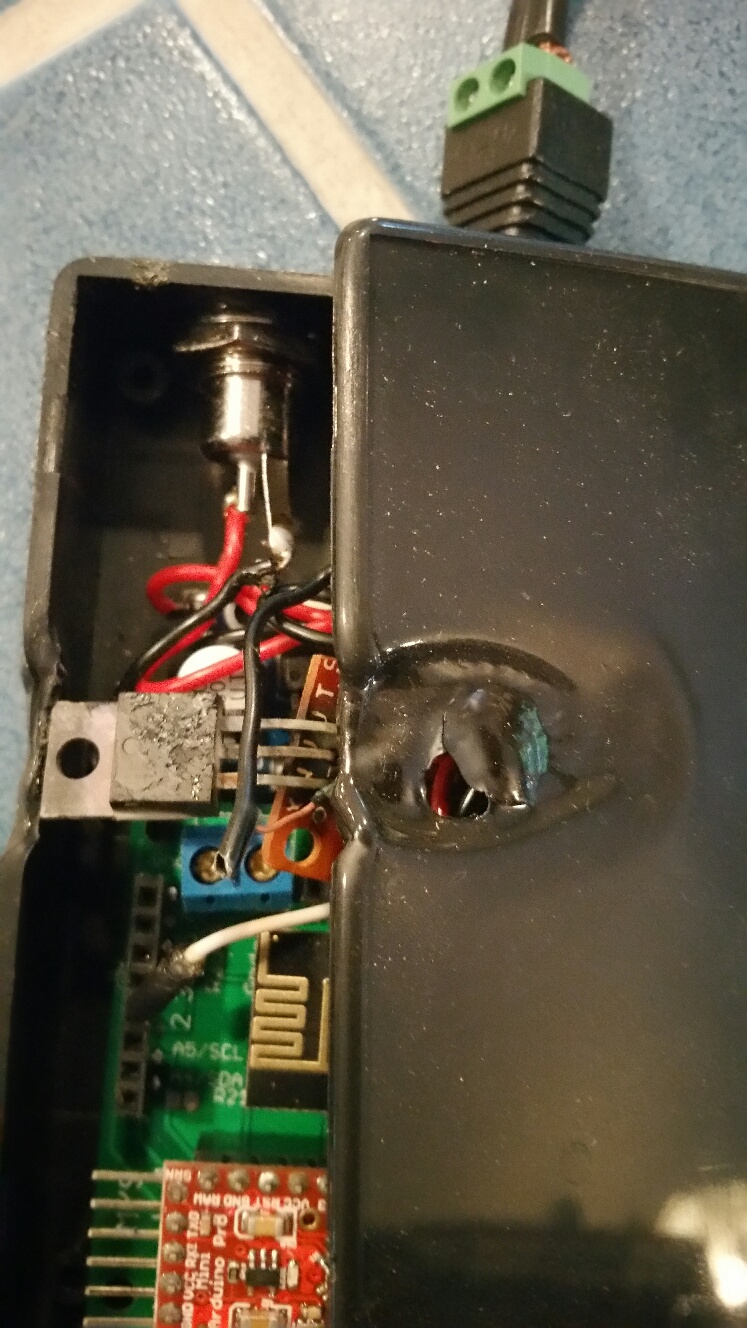DIY Outdoor LED
-
assembled another pro mini board and powered it using 5V wall wart this time, no 3v3 on the board. I think I blew 662K part too.
Let me try replacing it.
-AM
-
replaced the 662K part and now it seems to be working fine. I dug up my stash and found one step down converter like above. Let me power the node using it and see how it goes.
-AM
-
Powering a motion sensor sketch using the buck converter above. I wish I had my 12V relays in...
Here is a pic:

-
Connected the whole thing up....working nicely.
Though I do see a flicker when I try to dim it...

-
Figured out the flicker issue, it was the power supply. I was using a puny 750mA wall wart which could handle the PWM duty cycle. Once I put my hefty 12V power supply, its behaving fine.
I built a perfboard and the FET and was able to fit everything in a plastic DIY box from ebay.
How do I weatherize this because this will be outside exposed to elements? Also thinking of making some holes in the box to vent out some heat.
Whats the best way to do this?
-AM
-
Ready to rock n roll...
Packaging is done though I dont know how weatherproof this is going to be..

-
Ready to rock n roll...
Packaging is done though I dont know how weatherproof this is going to be..

@activemind looks good. I use these boxes outside. Just turn it upside down and your circuit should be protected from rain. I'm not sure your connectors will survive on the long run. (in fact i'm sure they won't :wink: )
-
Thanks for your response. Whats my other options for connectors? I really dont want to hardwire it.
-AM
-
Thanks for your response. Whats my other options for connectors? I really dont want to hardwire it.
-AM
@activemind you could either:
- use waterproof connectors
- don't use connectors and apply some sealing kit
- ignore the rusting and take action when it stops working :wink:
-
I think i will go with option#3 for now. These are landscape lights...world won't end if they go off after some time.
Lets see how long it lasts and if its too short then i could look at other options.
Plan to build 9 more of these ( total 10) and run some 14/2 LV this weekend. Will post pics when done.
I tested the light last night at its prospective location and it works like a champ. Nrf range aint that bad for the price ☺
-AM
-
@mfalkvidd Those connectors look intersting, let me look at them in more detail.
First one deployed today. Scheduled to come on at dusk and turn off at 10PM through Vera.
Will update with a pic in action.Went ahead and ordered 8 more and now need to assemble the "mysensor boxes" for them.
-AM
-
I changed the banana plugs to regular DC 2.1mm plugs and it looks less cluttered now.
Deployed it yesterday. Looks good.
Will upload pics if someone is interested.
-AM
-
Pics are always good. Please do upload
-
Here are some pics of the "final" product:
Thanks to everyone for their input.
-AM


-
So I deployed 5 more of these yesterday, so I have a total of 6 on the chain now.
The total current draw is ~5A at 12V...not bad!
Though I have an issue where the lights will go off for a little bit and then come back on.
Almost all of them are doing this and it doesnt happen at the same time so its not that the power is interrupted.
Makes me think as if the LED is heating up and shutting down and then when it cools down after a bit, it comes back on.
I tested them prior to deployment to make sure that they worked but didnt run them long enough that they would heat up. Plan on putting up one on the bench and leave it on longer to see if it does that.
But overall, not bad landscape light for 10 bucks!
-AM
-
Update: The landscape light are programmed to come on in the evening and they did not turn on this evening. Further investigation yielded this:


The FET was touching the plastic case and melted it :-(
-AM
-
Update: The landscape light are programmed to come on in the evening and they did not turn on this evening. Further investigation yielded this:


The FET was touching the plastic case and melted it :-(
-AM
@activemind are you dimming the led or only switch it? A (swich) fet in full saturation should have an internal resistance of less than 0.1 ohm. It would be hard to get it heated that much with a current in the range of 1 amp..
It could well be that your fet is not in full saturation. Take a look at the data sheet.. -
@mfalkvidd said:
This might help a bit http://www.aliexpress.com/item/10pcs-Free-Shipping-Aluminium-TO-220-Heatsink-TO-220-Heat-Sink-Transistor-Radiator-TO220-Cooler-Cooling/32684240364.html
Yup! I have them on order from China. Will try but I think I need to perforate the box too. Its drwaing ~5A which is amlost 60W. Maybe a little too much for a totally closed box!
-AM
